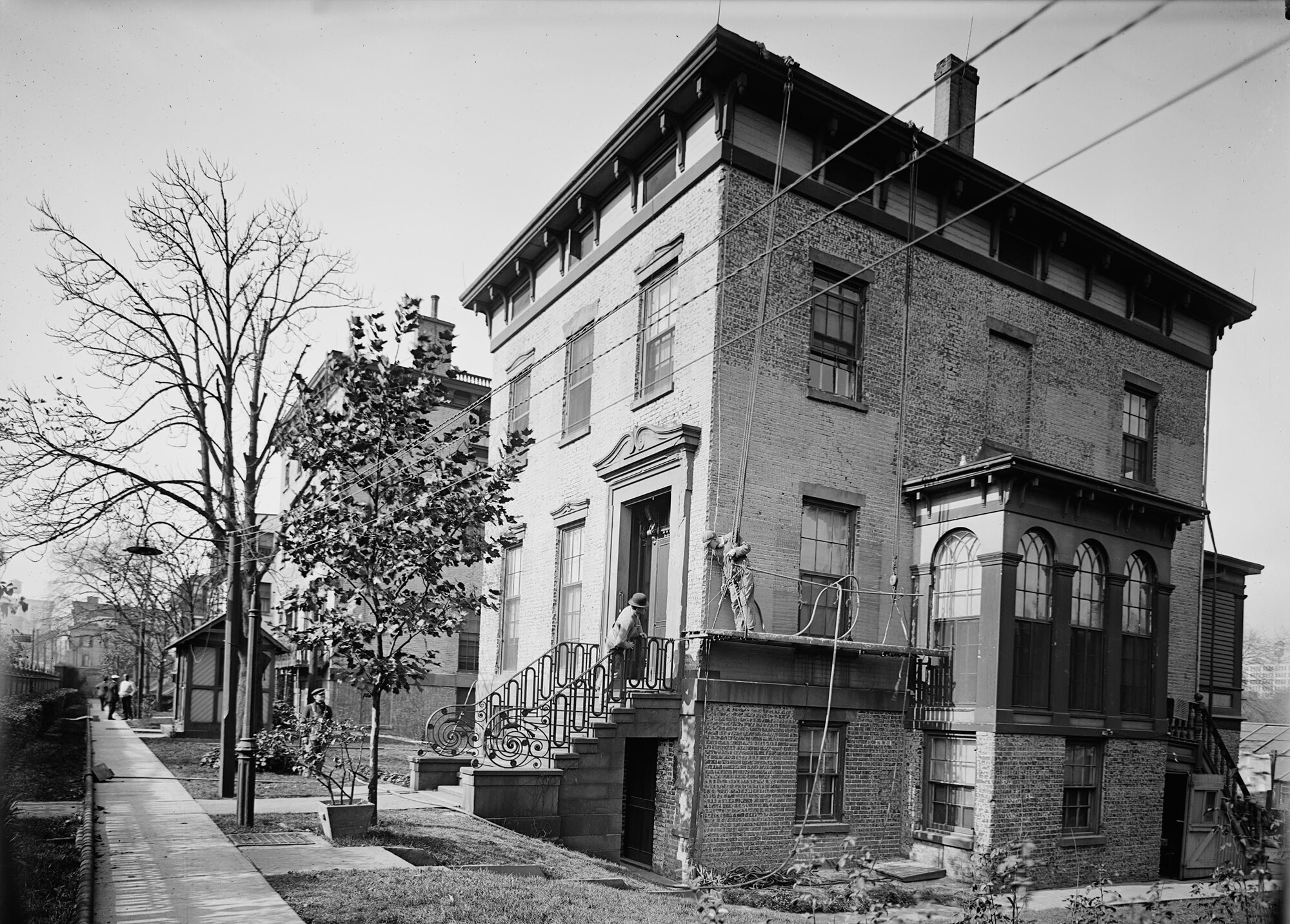Lone House Remains at Admiral's Row as Site Is Prepped for Construction of Wegmans Grocery
It’s been a long time coming, and it may be a bit longer of a wait for the development of the Admiral’s Row site at the Brooklyn Navy Yard.

It’s been a long time coming, and it may be a bit longer of a wait for the development of the Admiral’s Row site at the Brooklyn Navy Yard.
A recent visit showed that all but one of the 10 historic houses on the six-acre site at Flushing Avenue and Navy Street have been demolished to prepare for construction of a Wegmans grocery store, parking lot, and other retail and light manufacturing.
Work is proceeding on what appears to be a retaining wall of concrete running parallel to Flushing Avenue, but we could see no sign of a foundation being dug for the stores. Nor could we see any sign of the Timber Shed, the only other historic building that will be retained, from our vantage point behind the fence separating the Navy Yard from Flushing Avenue.
Visible on the concrete is a sign for Ulma Megalite, makers of modular systems for forming walls and columns in construction.
Developer Steiner NYC filed plans for the complex in 2016 with a projected opening date of 2017 for Wegmans. Later in 2016, a spokesperson for the Navy Yard said Wegmans would open in 2018.
Six months ago, Wegmans posted a help-wanted ad that said the store would open in “mid-late 2019,” according to a Business Insider report at the time.

Originally constructed between the 1860s and 1901, the houses of Admiral’s Row served as residences for officers of the Brooklyn Navy Yard. The Navy Yard closed in 1966 and the houses were vacated in the 1970s — and then they languished for decades, abandoned and decaying. Ownership of the site was finally transferred from the federal government to the Brooklyn Navy Yard Development Corporation in 2012.
Plans for redevelopment of the site took some twists and turns, going through three changes in developers.

While the residences were listed on the National Register in 2014 as part of the Brooklyn Navy Yard Historic District, they were not designated as New York City Landmarks. Preservation efforts to save more of the structures ultimately failed and demolition began in the summer of 2016.
While nine historic houses were demolished along with nine post-1950s structures, development plans call for the retention of two historic structures. The house left standing and currently shrouded in scaffolding is Quarters B, constructed in 1872.
The largest of the houses in the complex, it was the residence for the Captain of the Yard, according to the National Register nomination report. Also included in the redevelopment plans is the restoration of the Timber Shed, constructed circa 1841.
The 74,000 square foot Wegmans store will be one of the largest groceries in Brooklyn, providing much needed food access to the surrounding community. When announcing the new store in a 2015 press release, the retailer predicted an initial hire of 450 people, 150 of those for full-time jobs. They also committed to “maximize local hiring.”

Real estate developer Steiner NYC also developed Steiner Studios, a movie-making complex and the Navy Yard’s biggest tenant. Steiner will have 96-year lease from the Navy Yard.
The architect for the project is S9 Architecture, also behind the adaptive reuse of Empire Stores in Dumbo. The engineer on that project, Robert Silman Associates Structural Engineers, is also on the team for the Admiral’s Row site.
[Photos by Susan De Vries]
Related Stories
- Navy Yard Wegmans Tops 2015’s List of Biggest Brooklyn Retail Leases
- Navy Yard Drops Admiral’s Row Developer
- Hope For Two Admiral’s Row Buildings?
Email tips@brownstoner.com with further comments, questions or tips. Follow Brownstoner on Twitter and Instagram, and like us on Facebook.













What's Your Take? Leave a Comment